So, here’s the thing, I travel quite a bit. If you’re a regular here, you know this isn’t exactly the kind of news that would cause any concern over at the USGS earthquake monitoring center. Since I do get around, the images on the site and in my articles tend to reflect those adventures – almost to the point where one could conclude that doing serious wildlife photography requires packing the bags and hitting the road.
In fact, one of the most frequent comments I see both here on the site and over on YouTube boils down to one idea – that it seems difficult to be a wildlife photographer without constantly globe-trotting to exotic locations.
Although I am fortunate enough to travel on a regular basis for my wildlife photography, I’m going to prove that you can get excellent wildlife images even if you live in a seemingly “lousy” location.
Why am I so confident about this?
Easy – let me tell you where I call home.
Northwest Ohio.
Read that again; it’s not a typo…
Northwest
O…H….I….O
That little bit of text play above it about as exciting as it gets in these parts. (I live here for various family reasons I won’t elaborate on right now.)
I mean, let’s face it, when it comes to terrible locations for wildlife photography, NW Ohio has to rank pretty high on the list. Places like Yellowstone, Grand Teton, Africa, Costa Rica, Churchill, and most of Florida’s coast certainly aren’t losing sleep over the idea that NW Ohio could overtake them as the next wildlife hotspot.
So, if you live in a place that’s something less than a wildlife mecca, I feel ya.
Surprisingly, despite my rather unimpressive location, I can still go out and find critters to photograph. In fact, not only can I dig up subjects, but I’ve had many of those images featured in magazines, calendars, and other publications. In fact, the image below was published in Outdoor Photographer magazine back in 2011. This image was captured the moment he asked for yet another new lens…
Yelling Geese, Nikon D3x, Nikon 500mm + 1.4TC, F/8, ISO 640
Also, all the images in this article were captured within an hour’s drive of my home.
And, again, just to be clear, we’re talking about NW Ohio; the place where wildlife photography dreams go to die. So, if I can do it here, you can probably do it where you live too.
Part of the trick to photographing wildlife in a less-than-ideal location is knowing a few techniques to help get the job done. That’s where the rest of this article comes in.
So, let’s take a look at my top ten tips for photographing wildlife when your home isn’t on the edge of a place like Yellowstone National Park.
1. Really Explore Your Local Parks
My first bit of advice is to really get to know your local parks, wildlife areas, refuges, and pretty much any public land where you might find wildlife. Hike the trails, drive the area, whatever it takes. I know that sounds potentially boring and tedious (and sometimes is), but now and then you’ll strike gold.
For instance, one of my favorite places to shoot is a local Metropark located along a river. The area is hemmed in by a suburban jungle of two-story homes, swing sets, and white picket fences. Plus, it’s not overly large (like a couple of hundred acres), so you can spot signs of suburbia from half the vantage points on the main trail. In fact, due to its suburban-locked location, it was years before I ever gave it an ounce of attention. Based on its size and location, I just didn’t think it was worthwhile.
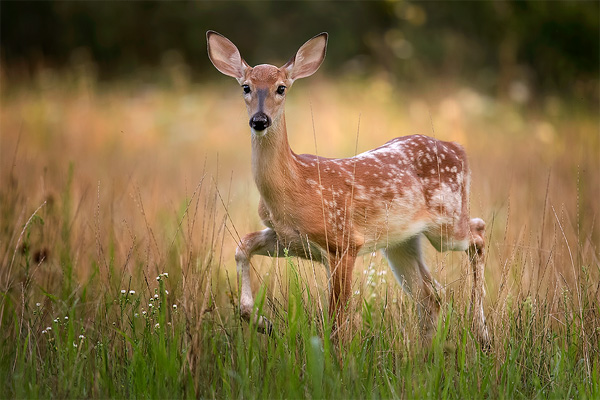
Marching Fawn, Nikon D500, Nikon 300PF, 1/1000th, F4, ISO 1800
Then, while talking with a friend about one of the other local parks, this one was mentioned. Promises were made and assurances given that it held ample opportunities for wildlife photography.
Skeptical, but with a tripod and lens slung over my shoulder nonetheless, I went for a hike one early morning.
And that park is now my #1, at-home, go-to location for wildlife.
While it’s no Yellowstone, I still manage at least a couple of good shots on just about every outing. In fact, I should probably go there tomorrow morning.
So, unless you give a location a few tries (or at least one), never assume it’s a dud – that was a HUGE mistake on my part and one that I’m glad to have corrected. Also, keep in mind locations that are completely devoid of wildlife at one time of the year might teem with opportunities at other times of the year (several places around here are like that).
Tip – By the way, I find that parks with easy access to rivers, lakes, and ponds seem to be the best for wildlife.
2. Talk To Locals
Yeah, I know you’re a local too, but try to talk to other people as you hike through the various parks and wild areas near your home. (Just don’t be weird about it, or if you must be weird, don’t tell them where you got the idea to strike up random conversations with strangers in the woods).
Too shy to strike up a conversation? No worries, most of the time just having a camera along is enough to elicit unsolicited comments from passers-by.
I can’t tell you the number of times I’ve been hiking along a trail and had someone stop and inform me they just saw a nice buck, fox, raccoon, etc. just a few moments ago in such-and-such a place. Or tell me about the locations for other wildlife in other parks in the area.
Coming Through! Nikon D5, Nikon 600mm, 1/4000th, F/6.3, ISO 2500
Of course, I have equal numbers stop and ask me (with my camera and large lens out) if I’m taking pictures…
Sigh…
And of course, if someone seems knowledgeable, you can always ask if they know better spots than where you currently are. You’d be surprised just how helpful people are and how much you can locate with their assistance.
So, make sure you are open to friendly conversation – it’s been a boon for my local wildlife photography and probably the #1 way I know of to find cool critters in your local area.
3. Don’t Fear Busy Parks
When trying to photograph wildlife, a frequent mistake is to think an isolated location is required to get good shots – when the opposite is usually the case.
One of the reasons why I get nose-to-beak or nose-to-snout with so many animals is because I frequent areas where the wildlife has become acclimated to a human presence. Critters that are accustomed to people just aren’t as quick to freak out and dart away at the first sign of footsteps.
Eye To Eye With A Frog, Nikon D7200, Nikon 200mm macro, 1/6th, F/9, ISO 800
(Published in Digital Photo Magazine)
On the other hand, the wildlife found in isolated locations tends to be far more wary of human contact since they get so little of it. And in some cases, what infrequent encounters they do have with humans often involves the business end of a rifle. (BTW – Areas that are off-limits to hunting are typically a better bet for wildlife photography)
So, even if a local park seems busy, don’t discount it as a possible location. In fact, that local park I mentioned just a bit ago is super-busy. I think that’s why the wildlife doesn’t flip out at every little snap of a twig.
4. Go Early And During The Week
In my experience, the crack of dawn is your best friend when it comes to local wildlife photography. Going early sets you up for success in several ways.
The first is obvious – animals are more active at the edges of day, so getting out as the sun rises increases your chances of success.
The second reason is light – there’s nothing like that first hour of slanty golden sunlight illuminating your wildlife subjects.
However, the third reason is arguably the most important. That reason? Fewer people.
The thing is, it’s usually easier to get close to wildlife that’s accustomed to people, and heavily trafficked parks are a catalyst for that. However, at the same time, the longer people are out in the park, the deeper into the woods even the most tolerant of animals will dive.
Winter Buck, Nikon D3x, Nikon 500mm, 1/500th, F/4.5, ISO 640
Besides, photographers attract attention. In fact, it seems like a photographer with gear pointed at a subject draws people about the same way a bright light attracts mosquitoes on a warm summer night at the swamp. Early morning photographers aren’t immune to this, but there is unquestionably less buzzing about by other hikers.
Finally, try to go during the week instead of the weekends – the foot traffic on the trail is always lighter.
5. Watch For Migrations
It seems that just about everywhere in the world, animals migrate – and some of those critters might just be passing through your region.
I’m ashamed to admit that I sort of ignored this in my area until recently. As it turns out, there’s a migration stopover for warblers that’s only about an hour from my home. It just so happens that each May, the Magee Marsh Wildlife Area hosts what is considered to be two of the best weeks of birding in the world!
Yellow Warbler, Taken while trying a Canon 5DIV, 100-400, 1/2500th, F/5.6, ISO 1250 (fill flash used)
Who knew, right?
Dozens of different warbler species, accounting for thousands of birds, use it as a stopover before continuing their flight over Lake Erie into Canada. Plus, they are super-easy to approach (a fast grab and you’d have a pet warbler…kidding). It only happens for a few weeks, but until recently, I never bothered. Now, if I’m home in May, you can bet I’m heading to the marsh!
Northern Parula, Nikon D500, Nikon 200-500, 1/640th, F/5.6, ISO 800 (fill flash used)
Side Note – this is an excellent example of a location that is slow for much of the year but can really boom at certain times.
So, it’s definitely worth keeping an eye out for species that might come through your area during migration. Heck, we even had a Snowy Owl or two in the vicinity this winter. It pays to watch those migrations!
6. Don’t Take Things For Granted
One potential trap local wildlife photographers tend to fall into is the “taking things for granted” snare. As a lifetime member of the slow learners club, it happens to me all the time.
In fact, the warbler migration I just mentioned above is certainly no secret, and I’ve known about it for YEARS. When the annual news stories about it appeared, I always thought, “Oh gee, that’s interesting, maybe I should take a look.”
However, because I live here, it wasn’t a priority for me. There’s always next year, right? So, in short, don’t take the opportunities in your area for granted – there might be some cool stuff you’re missing. In fact, not only did I get some nice warblers last year, but I found this pretty lady as well:
Raccoon, Nikon D500, Nikon 200-500, 1/320th, F/5.6, ISO 1600
7. Patience, Grasshopper
Hand-in-hand with the last tip is not skipping past common subjects or species. I know it’s easy to take local wildlife for granted – especially when they aren’t immediately cooperating. I mean, you can always come back tomorrow, right?
However, you should treat each opportunity as something that you may not get again and take the same care locally as you would if you were at some exotic location with a more interesting animal. Sure, if the shot isn’t going to happen go ahead and move on, but you’d be surprised how often patient persistence can yield good results.
Nikon D7200, Nikon 300PF, 1/200th, F/4, ISO 1600
As a side note, I find that when I’m in a promising situation, that just sort of “hanging out” with the wildlife can help put them at ease (especially if they are accustomed to people). In fact, while in the process of trying to win my subjects over, I avoid pointing the camera their way and usually try some “looking distracted” tactics. Don’t try hiding, crouching, or anything that would make it appear you’re wondering how they would taste in a stew. Instead, display unwavering interest in the various grasses, trees, rocks, etc. that are in your immediate area.
Once they have accepted you into the tribe (don’t worry, initiation isn’t usually too weird – it’s not like a frat house or anything), that’s when you can crouch lower if needed and start pointing cameras their way.
In addition, your technique should be just as careful and considered for the local deer as it would be for a leopard in Africa. The fact that an animal is common doesn’t excuse lazy technique. I’m just as particular about my photographic process with a local chipmunk as I am a grizzly in Yellowstone.
Nikon D850, Nikon 600mm + 1.4TC, 1/800th, F/5.6, ISO 6400
8. Watch The Web
Another trick is to join any Facebook groups for wildlife/birding enthusiasts in your area. Many parks and wild areas have their own Facebook page, Facebook group, or set of Facebook groups and these are often excellent sources of information. In fact, many of my local successes started by seeing a post about this or that species in the area.
Swan, Nikon D7500, Nikon 300 PF, 1/1600th, F/4, ISO 280
Plus, it’s another good way to start conversations and find new places to explore.
In any event, just do a quick google search for your local park/wild areas + Facebook to see if they have a page.
You can also search your area parks using Instagram and watch for new posts from other local photographers. I use this technique to keep an eye on not just my local area, but my favorites across the country.
9. Watch The Weather
Picking your days is a HUGE advantage for a local photographer and one you should absolutely avail yourself of. Since I’m local, I don’t have to rush out and shoot if the conditions are poor. I can pick and choose the best and most interesting weather for my shots.
Buck In The Fog At Sunrise, Nikon D7200, Nikon 80-400, 1/350th, F/5.6, ISO 560
So, if I wake up to a cloudy, dull sky, maybe I skip that day and go the next day when the sky is predicted to be clear.
In the winter, I tend to watch for when it’s going to snow, and if there’s an overnight storm predicted, I’ll be out in the park the next morning looking for snow-covered subjects.
Doe’s First Winter, Nikon D3x, Nikon 500mm, 1/640th, F/4, ISO 800
(Published in Digital Photo Mag + local claendar)
So take advantage of the local weather, picking and choosing the best possible conditions for your subjects. You live there, why settle for less?
10. Stay Realistic
The other key here is to stay realistic. I mean, I love shooting monkey photos, but I’m well aware that my chances of getting that kind of shot locally are about the same as catching a trout in a driveway puddle. When a species doesn’t live in your area, there’s just not much you can do about it.
The brutal truth is that sometimes you DO have to travel to get the animals you want. The bottom line is that no matter how much you want it to, this article won’t cure that situation.
The key is to focus on and learn to love the wildlife that IS in your area. Sure, I have more deer photos than the FDA recommended lifetime allowance, but hey, that’s cool. They’re fun, and I don’t mind adding to my collection.
Fawns, Nikon D4, Nikon 500mm, 1/350th, F4, ISO 6400
Plus, when you only have a limited number of species in your area, it can force you to set the bar higher. I’m always trying to find new and better ways to capture images of the animals in my area – I’m continually trying to take my photos of the locals to the next level (we’re still talking animals here).
So, don’t just accept “OK” images of your local critters – leverage the fact that you’re a local and can work long term and create something extraordinary.
Final thoughts
So, there you have it. When it comes to wildlife photography, NW Ohio is about as pathetic a destination as you can imagine. However, by putting some effort in, it’s still possible to harvest good shots.
Gray Tree Frog In A Flower (backyard shot), Nikon D3x, Nikon 200mm Macro, 1/60th, F/4.7, ISO 200
So, don’t despair.
Even if you live in a location that seems devoid of wildlife opportunities, give it another, closer look. You might just come away with some surprises.
For even more wildlife photography advice, you gotta check out my e-book, Secrets To Stunning Wildlife Photography! Nearly 300 pages of in-depth tips, tricks, and information!
As always, feel free to share this article with your friends – and thanks!
~Steve
PS…
If you enjoyed this post, I think you’ll REALLY like my e-books, Secrets To Stunning Wildlife Photography and Secrets To The Nikon Autofocus System. They’re filled with hundreds of pages of information just like this. Check it out – click here (hey, it’s free to look 🙂 )

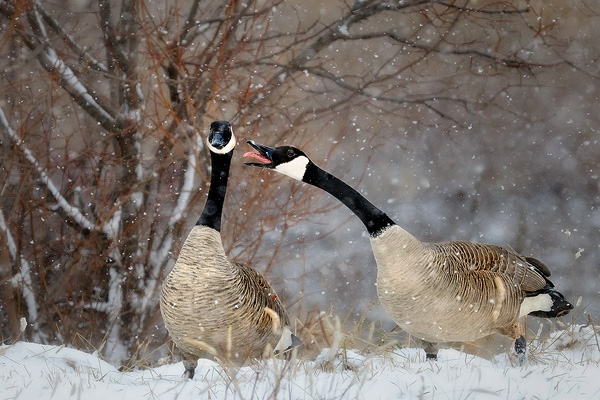
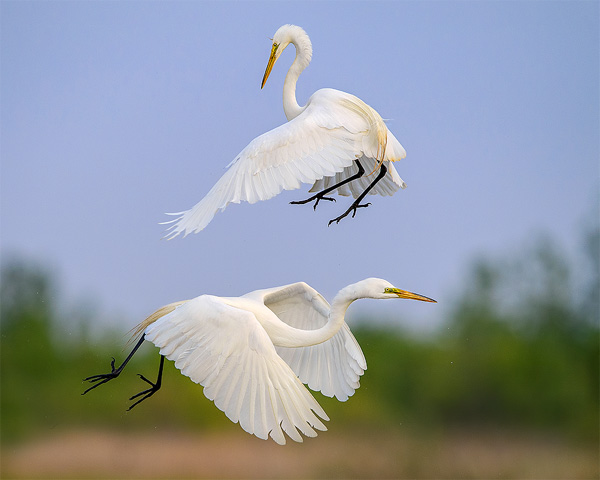
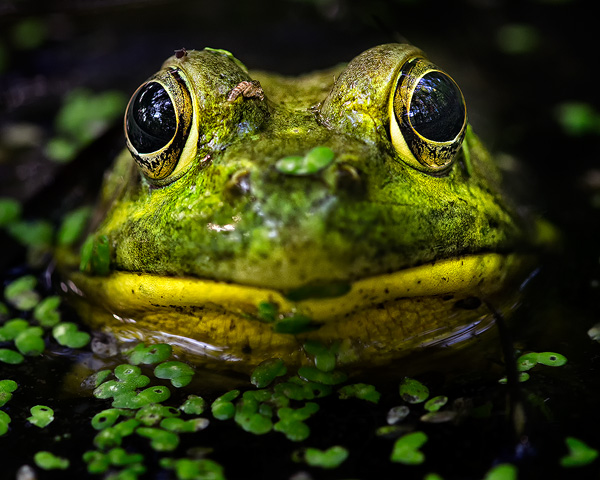
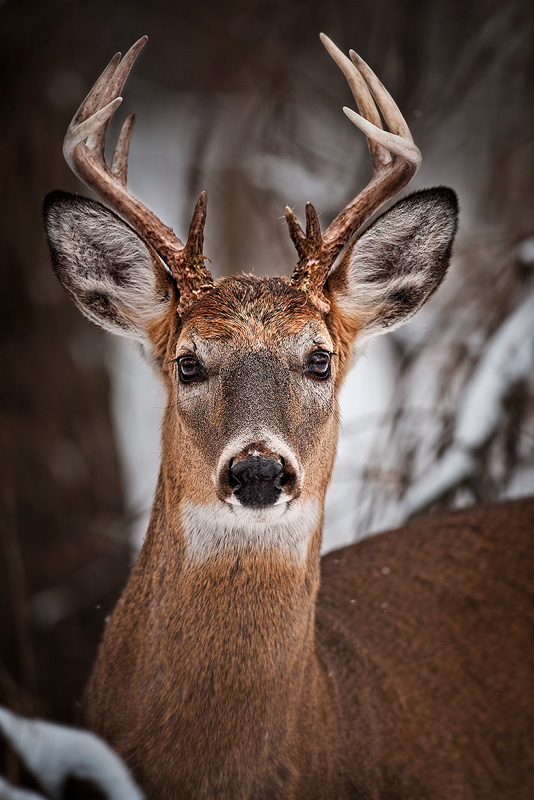
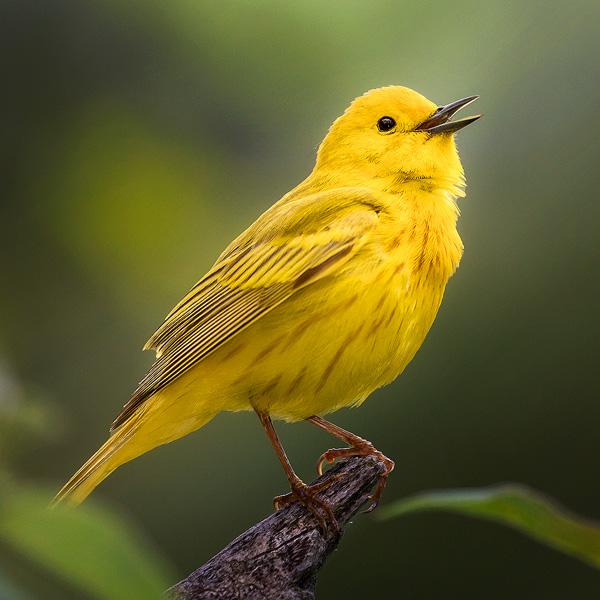
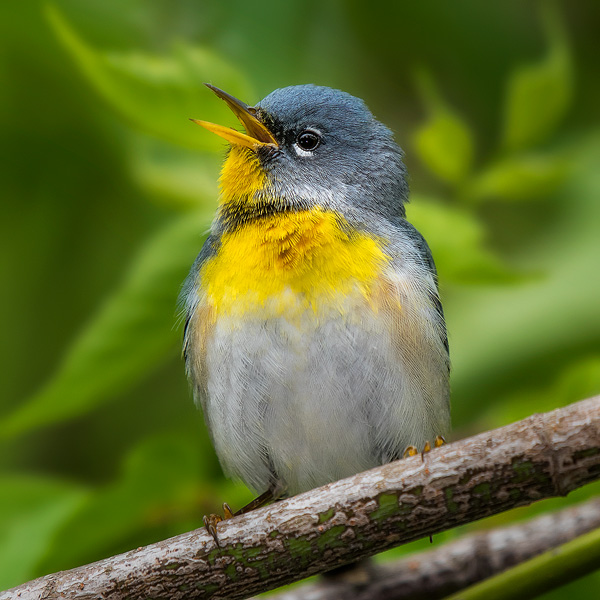
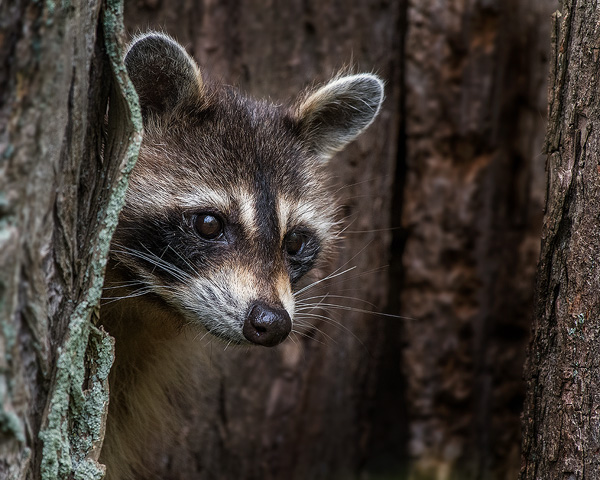
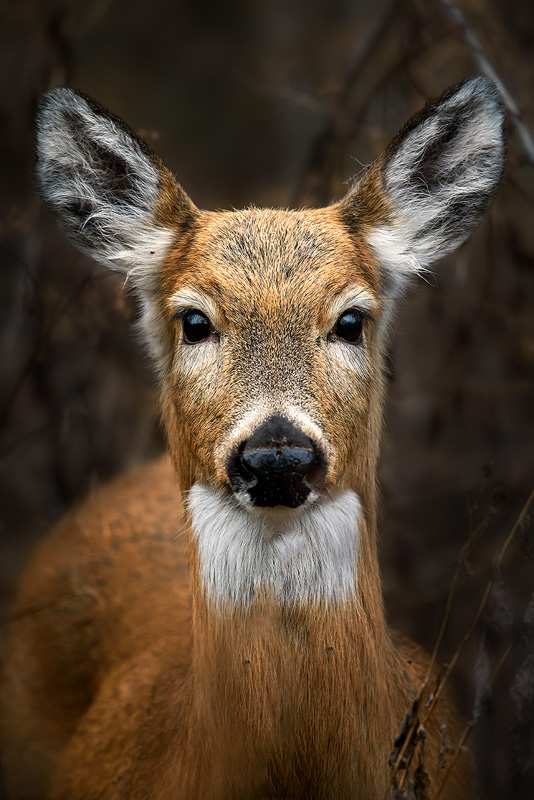
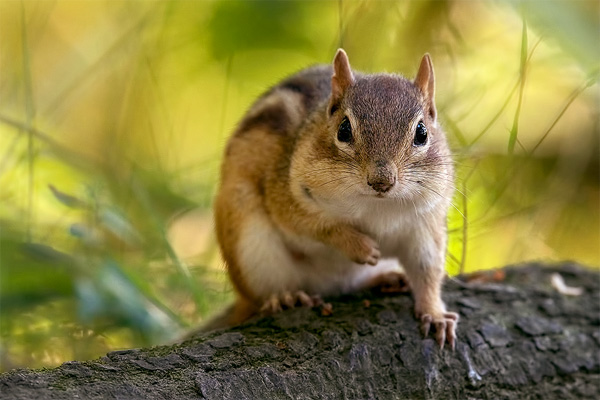
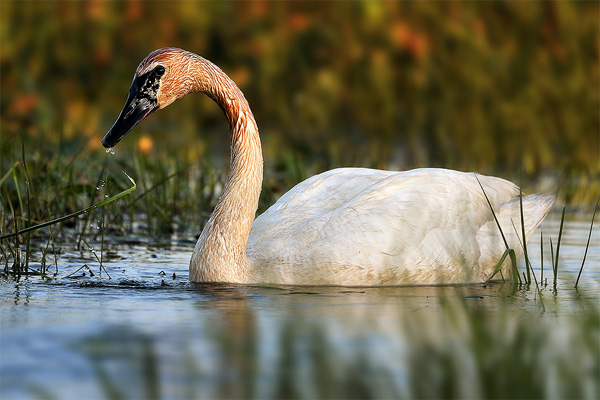
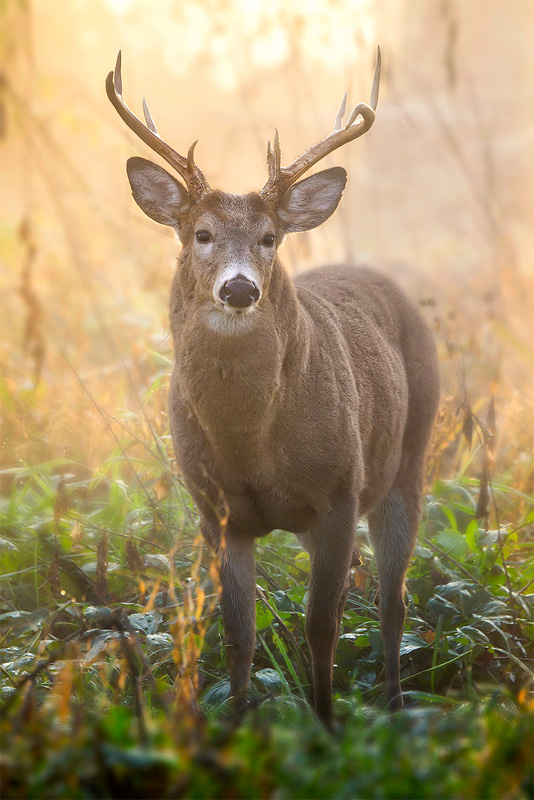
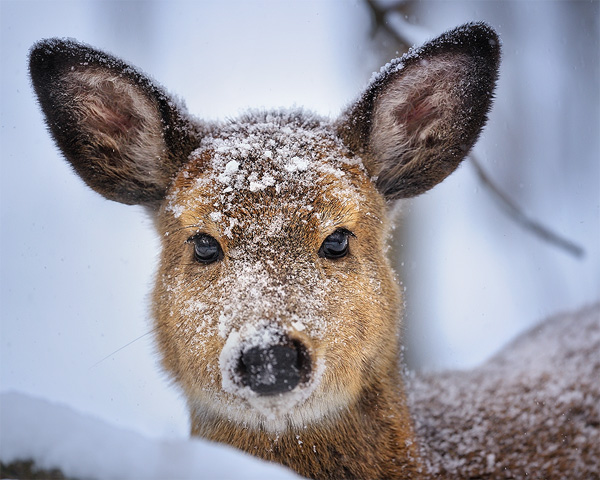
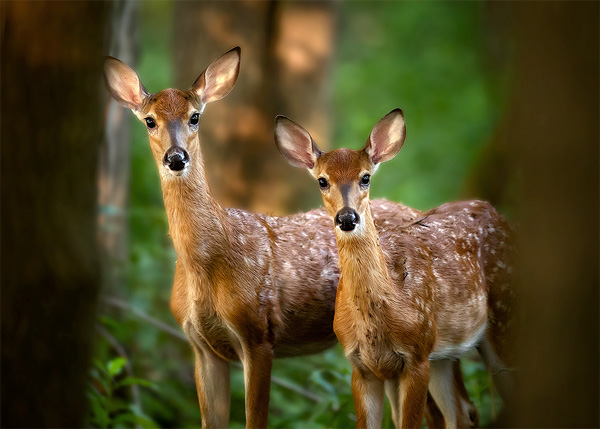
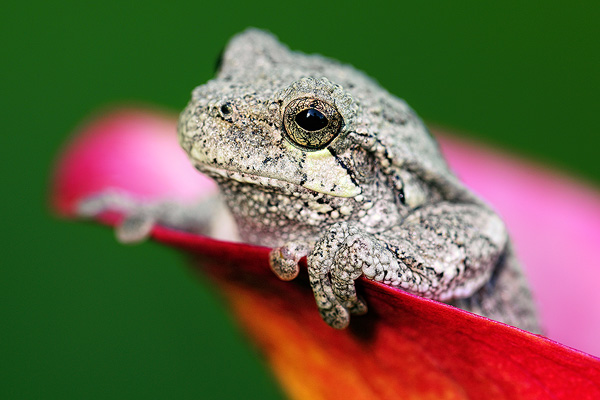
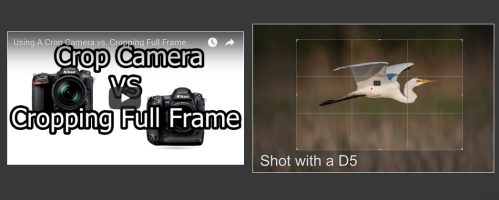
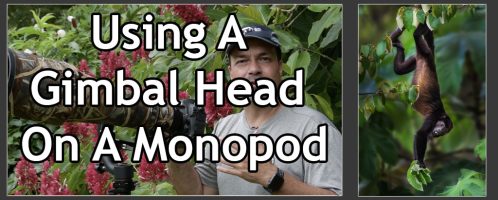
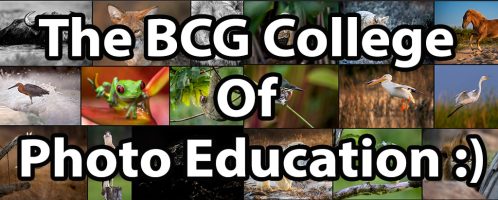
Thanks for these tips Steve! 🙂
Love the photos. I notice you use a very shallow depth of field for the animal shots. Is this so you can create a portrait-type shot with bokeh in the background? I’m an amateur so I don’t have a website. Thanks.
Pretty much. I like shallow DoF shots because they isolate the subject – bust backgrounds are the death of a good composition.
Excited to hear North West Ohio!!
I’m from South West Ohio. Looking to run into you someday!!!!
I really appreciate and profit from your articles. In addition, your book on Nikon autofocus has been very valuable in improving the quality of my work. Thank you!!
I enjoy and profit from your articles. Your autofocus manual for Nikon has been a real help and articles such as this are helping me become a better photographer. I wish you could have been doing this thirty years ago!! Thank you.
Total rookie question: When you’re out looking for wildlife, do you mainly walk around randomly or do you post up someplace and wait for the animals to come to you?
Seems like walking around might spook the animals, but if you just sit somewhere, the critters may never come your way.
Which produces more photo ops?
Thanks for this article, Steve. It’s nice to read about an article that does require spending thousands on travel to far away photo havens.
Thanks for the inspiration, Steve. It’s nice to see a article that doesn’t have to do with spending thousands on trips to far away photo havens.
Great Article. For local sources of information, don’t overlook local birding organizations and Audubon chapters. Many of these folks have spent years (decades?) doing local wildlife observations and really know the spots. Plus they make a great captive audience if you want to show off slides of your work. Photographers and birders can work well together. I’ve gotten some good shots on some of their scheduled field trips.
Excellent article!!! Some of the tips I’ve already put to use and some I want to incorporate into my local photography excursions. On my front porch! . Thanks for all the time you spend on giving us “free advice” and for another wonderful article!
Allen
Some of my best wildlife photography has been around my office at the drainage ponds and nearby woods.
I live in Orange county, Ca. we have the ocean of course, but we a lot of local regional parks with water features.
This has been a treasure trove of birding photography year round.
Everytime i go on the “Hunt” I look at it as adventure, and a lot of time it has turned out that way.
Hi Steve, your photo “Coming through”, were your camera settings manual with floating ISO? Just wondering about the high iso and fast shutter. Great article BTW.
Yes they were. I kept the SS high to make sure the action stayed frozen, plus with the D5, ISO 2500 really isn’t that high 🙂
I’ve lived in this house 20yrs and within 15 miles over 30 years and never knew about a local reserve run by the city until last year. It’s 2000 acres by a lake, but over on the “other side of the tracks”. Not only are there hawks and osprey, but there is a breeding pair of bald eagles. And it’s less than 10 minutes from my house. So sometimes it pays to just look on Google Earth or look at a map. You might be surprised what you’ll find.
Thanks for another outstanding article!
I’m moving to NW Ohio.:):) As usual your photos are amazing.
Actually over the years I got some great photos of birds and squirrels right in my yard. Some of the birds seem to know you are taking photos and will just hang around forever until I set up my equipment and take a dozen or so photos. We have a lot of deer here but never see them during the daylight. Maybe I have to get up at sunrise and get into the woods a bit deeper.
Would love to see your thoughts about the when, where, why, what and how of using fill flash for photographing wildlife.
That’s good stuff Steve! My area, Rhode Island, isn’t exactly a wildlife mecca, but there is a nice variety within an hours drive of my house. It varies with the season’s of course. I know in winter I’ll be out looking for ducks, common birds in unusual situations and the occasional rarity and migrating beauties like snowy owls! In the spring the osprey will be coming back and the spring migration will be in full swing. It’s not wildlife but we’re on the coast and the occasional nor’easter brings big waves to photograph. Bald Eagles are coming back strong and… Read more »
Lots of good points. It’s funny, I have an eagle nest about a mile form my house and pass it daily. I see eagles all the time, and my wife is always wondering the same thing – how do I spot them so easily. Like you say, you gotta be looking. In fact, I’ve mentioned the eagles nest to people in the area who pass by it (assuming everyone knew about it) and they never knew it was there. Now I just keep my mouth shut – they don’t need any extra attention (I don’t try to photograph this pair).
Great post, I really enjoyed the tips and photos. It was particularly fun to read this article as I sat on my front porch snapping shots of hummingbirds darting to and fro by our feeder. Just as I read your tips about allowing animals to acclimate to my presence, along came several wild turkeys strutting their stuff. No time like the present, as I followed your advice to get some images of the toms too.
It was time we’ll spent on a lazy Sunday afternoon.
Hi Steve, Love the newsletter and books! When are you opening up another Costa Rico trip? It’s on the bucket list!
We’ll announce those later this year – probably this fall. We’re also going to add Africa to that list in 2019 (pretty sure).
Steve, I really enjoy your site and articles they are very helpful!!!
My Dear Steve Perry..again you have done an extra-ordinary work for the betterment of WILDLIFE PHOTOGRAPHY – The sacred subject to all of us. What special herein are, you always gives the BEST to the subscriber as well as to the General Public. Very nice neatly prepared article. Best Regards and all Good Wishes to do more Great works like this. Once again Blessings and Regards.
Thanks 🙂
Awesome Steve! Good info. I recently bought both your E books and great so far just skimming thru. Ive been using the local Zoo to practice as I bought a yearly pass. It has been a great learning tool. New D850 has been a bit rough compared to my D500. Technique is very key with it I’ve noticed. Maybe soon we will see a video about how your shots are so damn sharp and crisp. Ive tried upping SS with higher ISO and its helped (still a long ways to go). Anyways thanks for all the Internet help and some… Read more »
Thanks Steve – everything I know about sharpness is in that AF book, but it sounds like you’re on the right track. You have to get AF figured out and dialed in, shutter speed right, and practice, practice, practice. That’s what gets you there 🙂
Thank you! I have learnt a lot reading and watching your work. Keep up the good work. I’m making good photos and now trying to do some videos too. Your presentations are crisp and clear and you are in deed a good teacher too. Thanks again. John
Thank for sharing another great articles. Love those close-ups! I used to live in mid-Michigan and there are more mosquitoes than wild critters for photography. My birder friends helped me to locate them during their migration through wildlife refuges. Then I discovered closed-up opportunities, then everything is good until opportunities to photograph Yellowstone or the Canadian Rockies come along. In the meantime one must sharpen his/her skills and their vision in order to create great photos.
As the world’s laziest backyard photographer, this article really resonated. I break every rule, never carrying my gear further than my patio, unwilling to get up early or interrupt cocktail hour for the best light, and most of my photos have been taken with equipment that totaled less than $1K (thanks to Nikon refurbished and lightly used gear). But I’m fortunate to live on 3 acres in northern CA near a stream and varied habitat, and I can never sit outside more than 20 minutes with out seeing at least a couple dozen different species of life wander by. Lots… Read more »
Been chasin’ wildlife in Mercer and Van Wert Counties all my life Steve. What you say is al so true! Additionally, Magee Marsh and the remaining locations near it has been an exceptional place to meet and talk with others from FM and all about North America for several years.
I have a D500 & 200-500 plus the usual suspects for wildlife. Your D500 shots seem amazingly clear with ISO’s in the 1600+ range. I’ve found it near impossible with Lightroom 6 to remove noise even as low as ISO 800. I’m using a 5k i Mac so perhaps in full resolution I’ve become too picky? Ideas?
As always, your information is priceless as it is candid. Thanks.
When the ISOs climb, I use Topaz Denoise rather than LR. Still tricky, but I’ll us emu D500 up to ISO 4000 in a pinch.
After watching Steve’s video on the D500 I will also push mine to ISO 4000. Once above 1250 I will first process in DXO’s photolab – although I only use it for removing noise (I use lightroom) I’m very pleased with the results, but they down’t have to reach publication standard as I make my living in a different field. These are just for my enjoyment
Thanks Steve for a very interesting article, I do tend to use my local nature reserve a lot and will pay attention to your tips
Enjoyed the post Steve. I live somewhat north of where you are, in SW Ontario, and agree that there are countless wildlife photo op’s right in my backyard. My goal this season is to capture more whitetail deer shots. Spring migration will soon be upon us and that means warblers! Thanks for the encouragement!
Couldn’t agree more with you on the local parks Steve. I live 10 minutes from a beautiful wetlands park just outside of Washington, DC and make it a habit to be there pre-sunrise several times a week. In the last week alone the Ospreys have returned, mating pairs of eagles circle above, elusive River Otters show themselves, and the water and marshlands teem with Shovelers, Wood Ducks Green & Blue Wing Teal, Black Ducks, Gadwalls, & Mallards. Raptors include Sharpies & Red-shouldered Hawks, Merlin, Peregrine & Barred Owls and the Warblers are on the way. This little gem of a… Read more »
Steve,
You are bang on . Many Wildife and Bird Photographers ignore their local park.
I like that becase it leaves the parks for me.
Great article, Steve. A resource some might find helpful is http://www.ebird.org They list tons of hotspots that even a local might not be familiar with. Often, good birding spots are also good for other animals. As far as common species, I really agree. I decided to commit some real time and effort into getting some good Canada Goose shots this winter, and it rewarded me with some portfolio worthy pictures. People don’t just look at them and say “oh, another goose” if they are truly great photographs. Thanks for this article. As always, you’ve given me several great ideas to… Read more »
Thanks Woody. I really think that’s the hardest thing for some people – not wanting to do a “common” species, but honestly, I pretty much like any kind of wildlife and have found the same thing – sometimes you can get extraordinary images of common species others ignore.
BTW – Cornell also has an app for the phone that’s incredibly good for bird IDs.
Good article. A pop-up blind is also helpful in working an area. If I set up one at the edge of a pond and wait the birds will come much closer – eventually. A car works well as a blind if you can park close enough. I also talk to local farmers and ranchers as their “pests” are often viable wildlife subject. I am on the notice lists for 4 different bird clubs and groups in my area so I can keep up with what birds are being spotted within a 2 hour drive time from my house.
Good suggestion I don’t use blinds too often, but when the wildlife is timid, there’s no substitute.
Hi love the article. I’m from Southeast Michigan. I see a lot of Deer but not a lot of other wildlife here. i’m an amatur photographer trying to learn more . Thank you for an awesome article.
Good advise Steve, Another good thing about local spots is it gives you the opportunity to practice your techniques like Panning or Framing your shots with pleasing backgrounds. Remember that patience is a practiced art. Enjoy your articles and books keep up the good work.
This sure was a great article. I have often felt that I have to travel to distant parks/beaches in Connecticut to find interesting wildlife but this sure opened my eyes to what is around me. Thanks so much for all of your great tips and tricks. By the way I love your Secrets to Stunning Wildlife…I’m still going through it but already this helped me to take some great photos of Sanderlings in a setting sun.
Thanks! I love those little sanderlings BTW – I know they are terribly common, but I always have a bast chasing them around and trying to catch them in fight (or running with both feet off the ground).
Have you also visited Ottawa NWR, just up the road from Magee Marsh? Wildlife Drive open one weekend a month, hiking trails, great habitat.
Yup – that image of the two egrets as well as the swan were captured there. However, I’ve not done the wildlife drive – I’ll have to give it a go 🙂
Love your stuff and books Steve, but this is the one article that hasn’t helped 🙂 Living in London UK you can only take so many pictures of seagulls, pigeons and sparrows. OK I lie, a robin or two and a few grey squirrels :(. No deer, mammals of any sort, other than pet pitbulls and definitely no colourful birds. And even trying to photograph the above is a pain, it either rains or is dull and miserable with no decent lighting. I’m afraid that for me, i’ll have to wait until I am rich to travel to warmer climates… Read more »
“MUZ”, I would have to disagree on no photo opportunity in the city. You can find wild things everywhere. You just have to look a little harder or closer. And those dull or rainy days can add a lot of atmosphere to an image. Sometimes that fly that just landed on your wall can be a great shot! Sometimes it is not the animal its self, but the activity. A Seagull alone may be boring, but two having a bill fight or one in a unique pose can be a treasure. I shoot a lot of Pelicans, can be repetitive,… Read more »
I agree. I have a ton of wading bird an deer pics, but I always feel like there’s something better and more challenging to capture with even common species.
London UK? There are some great opportunities there. I visit my son there and love to out to photograph Red Deer and fallow deer at Regent Park in sunlight or fog on an early morning. Squirrels too. Lots of birds in the parks aorund Shepard’s Bush so don’t wait to be rich – you already are.
What terrific,informative and generous advice Steve, I’m setting off now.
Wonderful post, Steve, and spot-on tips. Since taking up wildlife photography last year, I routinely frequent a local nature preserve and an area along a bike greenway – try to get there couple of times a week. Depending on the season, I either have the D500/200-500mm or my Panasonic G85 macro rig with me. Probably my greatest realization has been, as you pointed out, the importance of patience. Here’s wishing you continued success. And PS- think you could do a video/blog article on fill-flash for wildlife?
Ok Steve, I love your work and this article is great but I have to ask, “Where do you get all the fun little “sayings” like the trout-in-the-puddle one you used with this piece?” They show up everywhere especially in your books (I have a couple of them) AND I seldom see repeats. Do you carry a recorder so you can capture them when they pop into your mind or do they just appear at your fingertips when at the keyboard writing a piece? Your writing is ALWAYS informative and entertaining but the “sayings” add that “little extra” other authors… Read more »
Thanks – no clue where they come from TBH. I’ve heard some of them and repeat them, but many just sort of pop into my head – including that driveway puddle thing – not sure where it came from, but I thought it was funny when it popped out 🙂 I seem to get more of them when I write about technique than tech stuff and they were coming fast and furious with this article. Although, my wife makes a good argument that my constantly joking can get old LOL 🙂
Steve,
I think most of us aspiring photographers believe that you give much more than we offer in return.I know I really appreciate your books, videos and suggestions.
Cheers!
RH
Always a pleasure reading your informative articles that are like eating a bowl of riped strawberries with cream. Thank you.
Great article, Steve! Nearly each morning, I venture forth into our small yard and closely look at the shrubs, trees and other foliage hoping to capture larvae chomping on a tiny flower’s petal. I examine the siding of our home and other structures, such as the fence and stone wall, hoping to glimpse a frog or alligator lizard, sunning themselves. Early morning is the best time to capture dew-laden webs, butterflies, bees or tiny flowers for some stellar macro images. Wherever one encounters flora, including along sidewalks in residential neighborhoods, similar opportunities are sure to present themselves. It is easy… Read more »
I’m on three acres and have one of those that I allow to grow wild. I occasionally head back there and do some macro work – sooooo many opportunities! That last frog in the article was in my backyard – we get a ton of those little gray tree frogs 🙂
Great article Steve. Just goes to show you that photography opportunities are everywhere. BTW, let’s not try out anymore Canon stuff. The hair on my neck is still standing.
LOL I wanted to expand my knowledge into another system, but just didn’t like it very much, so no worries. 🙂
Steve,
Refreshing perspective as usual.
Motivational as well.
So basically – get out and shoot and enjoy….the basics should be part of the journey.
Steve,
Another great informative article. Question- what do you use for your fill flash in your bird photos?
Thanks
Right now, an SB 5000, but an SB 910 earlier this year. I typically leave it on TTL, dial the exposure down 1 to 2 stops, and fire away. The trick is to use enough to help fill in the shadows without making it look too much like a flash photo.
Hi Steve! I usually preface my correspondence with you by stating “I’ve been a commercial photographer for almost 30 years…”; Reason I say that is because what you “teach” transcends wildlife photography. Sure, I’d love to be a pro wildlife photographer but my commercial work pays the bills. However, your content and delivery style encourages me to keep learning and is very entertaining. The “trout in a puddle on the driveway” was awesome. Please keep up the great work. I know the challenges associated with the photo business so I truly respect your effort, discipline and passion. Oh, by the… Read more »
Hi I live in Eaton Ohio. Just north of you by 45 minutes to an hour. I live next to over 600 acres of a wildlife area that is empty all year except deer season. If you ever want to come up this way let me know. I can meet you close and fill you in on some excellent opportunities. Also I have some amazing pictures from Mt. Echo Park of Cincinnati
You put a smile on my face, Steve. Thanks for another well written piece of advice.
Don
Steve, I thoroughly agree with your statement that you don’t have to leave your home area to find exciting natural subjects to photograph. I estimate that perhaps 90% of my images are either outside my door or within my immediate neighborhood (within 1/3rd of a mile of my door). I constantly find new natural objects to examine, new details of nature to admire and wonder at. I tell people to “look closely” at what is around them when I hold occasional photo workshops. And thank you so much for your two videos showing 7 tips for Nikon users. I’ve implemented… Read more »